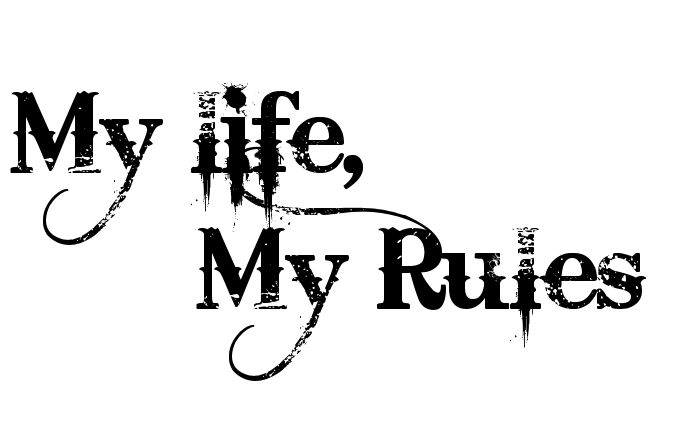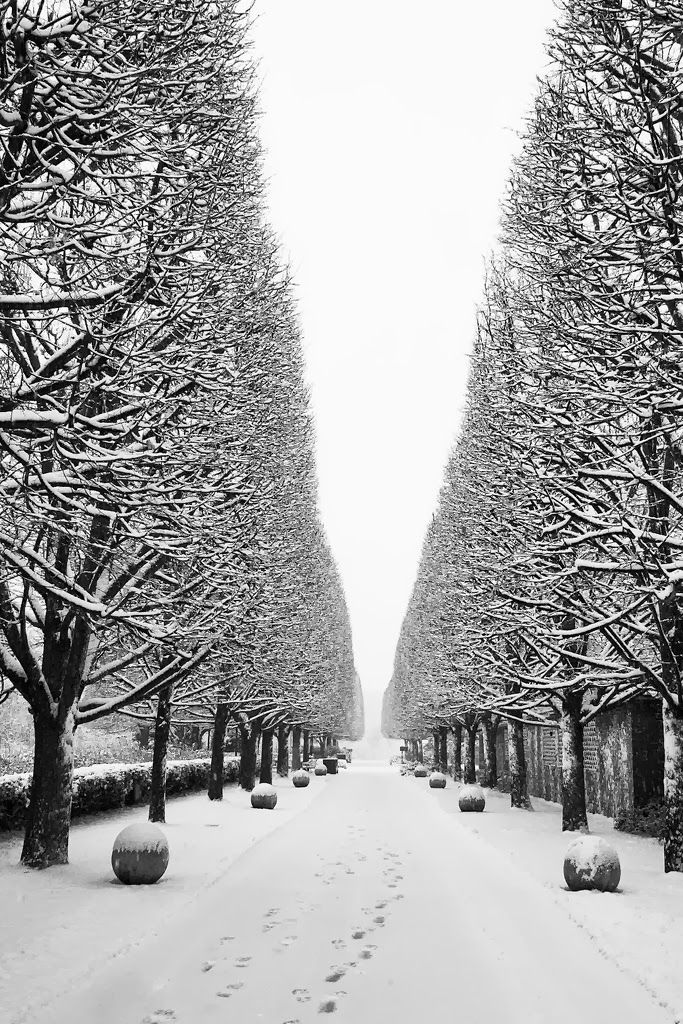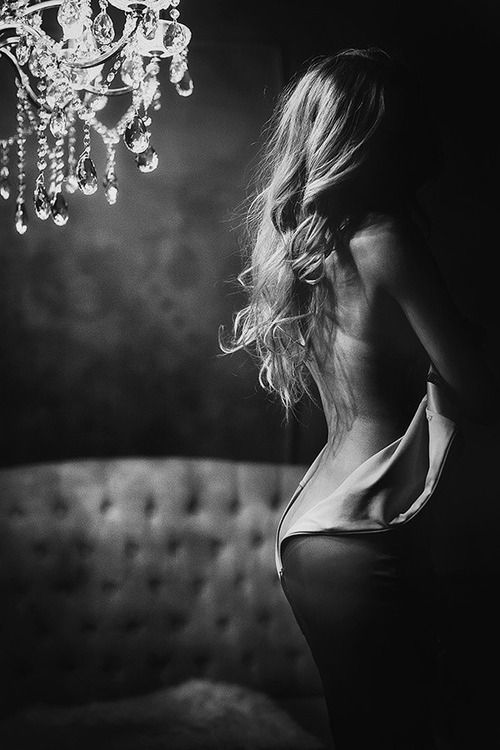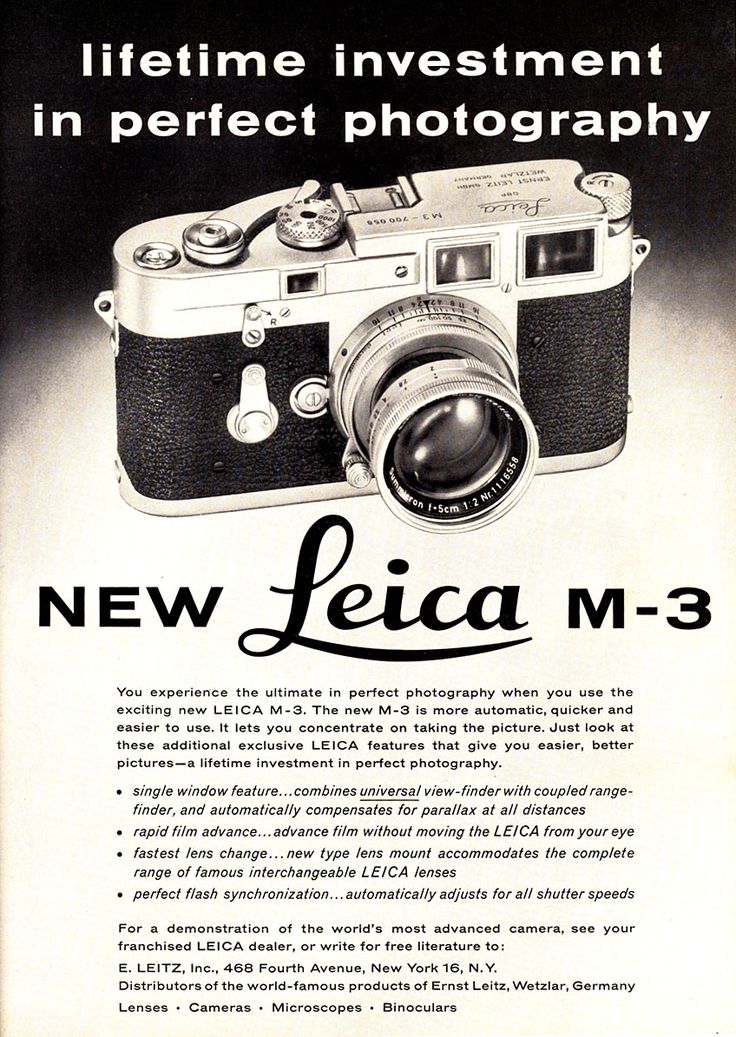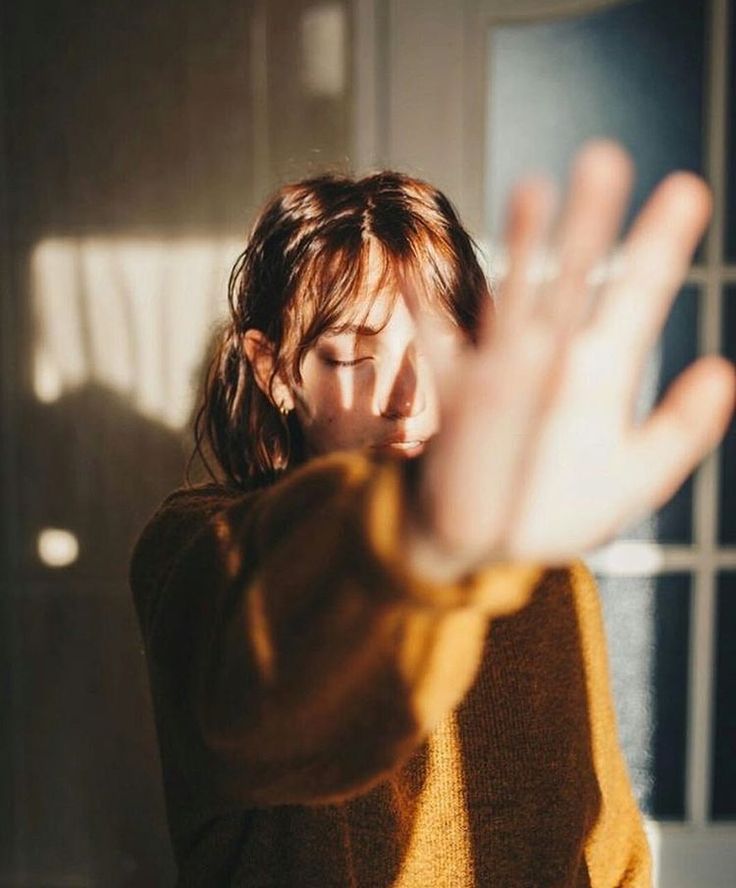Lighting for still life
Lighting for Still Life Photography
NOTE: We made a fancy PDF of this post for printing and viewing offline. Click here to download it for free.
In my first article, Beginner’s Guide to Still Life Photography, I talk about the physical and storytelling elements involved in setting up a still life scene. Of course, the missing component of that article was the lighting, and such is its importance that I am dedicating an article specifically for the lighting of a still life photograph.
Photograph by Stacey Hill
One of the benefits of still life photography is that it doesn’t necessarily need to take up a lot of space. My spare bedroom functions as my studio. My still life work is done on a craft table that measures 2 x 3 feet and folds up out of the way when necessary.
Studio setup with a cat sleeping where he shouldn’t be. Photograph by Stacey Hill
I am lucky that I have a spare room with a window. The window allows me to use natural light as the basis for my photography. Natural light is my preferred choice, but it isn’t the only option.
What you will use to light up your still life photos may depend upon your preferences or requirements, and while there are recommended concepts to consider, how you create your lighting is up to you.
Here we will consider the following:
- What is light and why does it matter?
- Shaping and controlling light
- Mood and impact
- Tools
Recommended Reading: If you’re interested in learning more about light and how you can use it to improve your photography, grab a copy of Photzy’s bestselling premium guide, Understanding Light Book Two.
What is Light and Why Does It Matter?
There are all sorts of scientific explanations about what light is, which I won’t bore you with. From a photographer’s point of view, light is the necessary ingredient that allows us to see our world and capture images of it.
Light is made up of two components that are especially important to still life photography: light waves and shadow.
If you only have direct (frontal) intense light shining upon your scene, then there are no shadows, which means your shot will look very flat. You will also likely have colors that are washed out and highlights that are blown out.
High-key lighting scenario. Photograph by Stacey Hill
While harsh bright light can be used artistically – often in high-key lighting scenarios – if you are taking photos of food, it may be difficult to make the subject look tasty and delicious with very harsh bright lighting.
Low-key lighting scenario. Photograph by Stacey Hill
The reverse is when you have minimal light and lots of black and shadows – this is referred to as a low-key lighting scenario. When you incorporate lots of dark shadows, it makes the color tones rich and intense, and this lighting scenario can work very well as a style choice for your still life photography.
Lighting is critical to the mood and the story that you might be telling with your still life photo.
For example, if the scene is a cold winter night, with a hot chocolate sitting in front of a fire, you will probably go for a darker, moodier lighting option.
However, a summer cocktail would likely be best portrayed with a lighting scenario that is brighter, with light tones, and displaying a more cheery mood.
Key Information: The brightness and intensity of the light that you have on your scene is important. It has a direct impact on the quality of the image and the mood/story that you are trying to tell.
Shaping and Controlling Light
When you are outside working with landscapes, you have little control over the lighting conditions. You can’t turn the intensity of the sun down.
So instead, you go out when the light is softer: on overcast cloudy days or at the Golden Hour. You make choices that impact the lighting on your scenes.
One of the benefits of shooting still life photography indoors in a studio is that you have a lot more control over the lighting.
Here are some of the ways that you can shape and control the lighting in your scene:
- Choose the direction of the light – back, front, or side lighting
- Choose the angle of the light
- Filter the light to make it softer and more diffused
- Opt for natural, or artificial, light sources
- Reflect or block the light
- Change the color of the light
One of the benefits of shooting still life photography indoors in a studio is that you have a lot more control over the lighting.
The easiest (and cheapest) option for lighting is to go with natural light, especially if you are just getting started. Hopefully you have access to a room with a window that you can work in front of.
Natural light is preferred because it is the color that we expect it to be, and it can be managed through diffusion and using bounce techniques.
Artificial lighting can vary in color temperature, especially the low-end affordable options. It can be quite focused, directional, and intense. This means it will take a lot more management on your part to be made to look natural. It is also more expensive as you have to buy it. However, if your only option is to shoot in a garage, or a basement room, then artificial lighting may be your best option.
It can be quite focused, directional, and intense. This means it will take a lot more management on your part to be made to look natural. It is also more expensive as you have to buy it. However, if your only option is to shoot in a garage, or a basement room, then artificial lighting may be your best option.
This was shot with an electronic flash. The shadows are very hard and dark as a result of the lighting. Photograph by Stacey Hill
We can control and shape the results of artificial lighting in different ways as well:
- If there are shadow areas, we can bounce or reflect light back into them to lighten them up.
- We can intensify and deepen the shadows by blocking light.
- The color of the background, and any reflectors we use, will have an impact on the tone of the image.
- Black cards create and deepen shadows by blocking light.
- White reflectors add more light by bouncing the light back into the scene.
- Diffusion material can soften the light.

- Mirrors can intensify, bounce, and focus light back into the set.
Shaping the light, and managing the shadows, has an important impact.
The balance between light and shadow is what gives the physical elements on your set their 3-dimensional presence, and that can be part of your creative style when lighting a still life photograph.
Gerbera flower – backlit by a window covered in white fabric to diffuse the light. Photograph by Stacey Hill
This is why many still life photographers prefer side lighting, as it allows them to use both light and shadow as a physical element within their scene.
Backlighting offers different creative choices.
Key Information: You can control, shape, and manage your lighting to enhance your image, and you can also add your own personal style, or creative flourish, to the final image by making lighting choices.
Recommended Reading: If you’re interested in learning more about light and how you can use it to improve your photography, grab a copy of Photzy’s bestselling premium guide, Understanding Light Book Two.
Mood and Impact
Notice how the side lighting provides “curvature” to the blueberry. Photograph by Stacey Hill
Let’s look at a range of different images that were shot in my studio (my setup for these different shots was always the same).
The primary light source is a window on the left so that the light comes from the left, and slightly behind camera.
The window has a translucent net curtain to soften the light (sometimes I use an extra piece of white gauze if it is a particularly bright sunny day).
I use white or black foam core for the backgrounds, reflectors, and flags (a flag is used to block light).
My personal preference is toward the dark moody style, but I have included something for everyone here as inspiration.
My favorite style – dark and moody. Photograph by Stacey Hill
An example of a high-key still life photograph. Notice how it has a light, dreamy, and ethereal mood. Photograph by Stacey Hill
Proper lighting can make colors pop. Photograph by Stacey Hill
Photograph by Stacey Hill
The shadows give depth to a still life photograph. Photograph by Stacey Hill
When the lighting comes toward the subject from a very low angle, it can dramatize the shapes of your subject. Photograph by Stacey Hill
When I shoot dark moody images, I have a particular message in my mind. I want the colors to be rich and intense.
In a food still life photograph, the food should be a focus and look tasty and delicious. In fact, I want it to appear sexy!
The brighter images (for me) are a bit more playful because there is more light to work with.
I can experiment with techniques like pouring a liquid and then capturing the motion – while the rest of the still life retains sharpness.
I can tell more of a story with different props and backgrounds.
The food shown in a still life photograph is always the star of the show, but the props and backgrounds can make the food more approachable and help set the story.
As far as impact goes, here is a sequence of images (below) that I shot with exactly the same setup, except for one thing…
I used a dark flag to increase shadow, and block light from hitting the set, by positioning it in different places around the scene.
You can’t see where the reflector is. It is sitting outside of the frame, but you can see the impact it has had on this series.
Sometimes the difference is very subtle; it might just tone down the highlights around the rim and handle of the jug, for example.
Photograph by Stacey Hill
The jug is lighter in comparison to the first image. My flag darkened the jug. Photograph by Stacey Hill
My flag created more shadows to the camera left side of the jug, but the raspberries in the jug are still quite evenly lit. Photograph by Stacey Hill
There is more light on the foreground and the jug to camera left. My flag was placed to camera right of the jug. Photograph by Stacey Hill
This was my setup, showing the tripod in position and at the angle that it was being used for all the images of the raspberries in a jug on the previous pages. Photograph by Stacey Hill
Photograph by Stacey Hill
Controlling the light in your still life scene has a direct impact on the whole feel and tone of the image.
It also has technical implications.
Controlling the light in your still life scene has a direct impact on the whole feel and tone of the image.
If you block a lot of light to go for the dark, moody, heavy, shadow style, you absolutely need to shoot on a tripod.
Some of my shutter speeds were as low as 1/10th second, or it can be even slower.
You may also need to raise your ISO; however, this can affect the quality of your final image, depending on how well your camera copes with the higher ISO settings.
If you want to practice capturing some movement, try sprinkling some sugar or pouring salad dressing while you click the shutter release.
You will need to have the right shutter speeds to get the outcome that you want, and that may impact the decisions that you will make on how to light the scene.
Key Lesson: We already know that controlling the light has direct impact on the feel and mood of your final image. It may also require you to make technical adjustments to the way you shoot a scene. The intensity of the light accounts for exposure settings and, ultimately, image sharpness.
Artificial Light Source – Accessible options for beginners might be the Lowel Ego Light Unit or a camera flash (I recommend off-camera lighting with an electronic flash). You can also start out using simple household lamps.
Reflectors/bounce cards/flags – A 5-in-1 unit option gives you a translucent base and also a White, Black/ Silver and Gold reflector covers to put around the base. These are available in a range of sizes. Earlier, I mentioned foam core. This product is very useful as a reflector or a flag as well. It can generally be found at art supply stores or some camera shops. It’s inexpensive and can be easily cut to size.
Tripod – A good sturdy one for extended exposures.
Light stand for the electronic flash (if you’re using one).
White fabric for covering a window light source – This is very important. You don’t want an opaque fabric unless you’re trying to eliminate all of the light coming through the window. You want a white translucent fabric. Many fabric stores sell a material called “white rip-stop nylon.” This works really well for diffusing window light. It also comes in black, and if you’re handy you can make some neat flags with black rip-stop nylon.
White/Black (or colored) large foam core sheets for backgrounds and backdrops.
For this dark raspberry shot, the background is a black painted card. The backdrop and the side drop are black foam core. The shallow V-shaped light modifiers are heavy black cardboard. Photograph by Stacey Hill.
Key Lesson: Having the right tools to modify your light allows you more control over the final outcome. Plus, it allows you to extend the scope of your creative lighting choices.
Plus, it allows you to extend the scope of your creative lighting choices.
Recommended Reading: If you’re interested in learning more about light and how you can use it to improve your photography, grab a copy of Photzy’s bestselling premium guide, Understanding Light Book Two.
Let’s look at a couple of my shoot setups so that you can see the different elements being used:
With this much lighter, brighter shot, the background is white painted beadboard. The backdrop is white foam core draped with a white gauzy fabric that gives a seamless universal background in the distance. It also adds a bit of fabric texture to the right side of the shot. Photograph by Stacey Hill
Summary
Light is a critical factor in all photography, but not just any light. It has to be the right light for the situation.
Still life photography that is shot within a studio setting offers you a greater scope of control over the lighting.
The color, direction, angle, and balance of light/ shadow are critical components in composing your still life image.
Not only does the lighting have technical considerations, but it is also a key element creating the mood, or feeling, that you wish to bring to the image.
By using your light creatively, you can elevate your still life images from Good to WOW.
Self Check Quiz:
- What are the lighting styles called that are either very bright tones or very dark tones?
- What kind of lighting is preferred for still life photography when starting out?
- Does the light generally need to be softened or diffused?
- Does light affect the story your image is telling?
- What kind of materials can you use to control light?
Answers:
- High-key and low-key
- Natural light
- Yes. This helps to avoid blown-out highlights, and it softens the shadows for a more natural look.

- Yes. Absolutely.
- Foam core, mirrors, paper, cardboard, and different types of cloth (translucent and opaque)
5 Still Life Lighting Tips for Breathtaking Photos
Did you know that lighting is the single most important element in still life photography?
It’s true. Lighting adds mood, provides context, boosts interest, and helps create dynamic shots – so if you can learn to do still life lighting like an expert, then you’ll be well on your way to capturing outstanding images.
That’s where this article comes in handy. I share my top five lighting tips for gorgeous still life photos; by the time you’re finished reading, you’ll be ready to light your shots like a pro (and get great results every time!).
Let’s dive right in.
1. Use directional lighting
The best still life photos tend to feature lots of texture…
…and if you want to bring out texture, then sidelight is the way to go. In other words, position your light source off to the side so that one portion of your still life scene is brightly lit while the other portion features obvious shadows.
Note that you can create directional lighting either using studio lights (e.g., flashes or strobes) or with natural window light. Personally, I prefer studio lighting, as it offers far greater control over the final result, but window lighting can still work (and plenty of great still life shooters only use window light).
Now, sidelight encompasses a slew of different lighting angles, so I encourage you to experiment until you get the images you’re after. If you position your lighting setup to hit the scene from a 90-degree angle – in other words, you aim for true sidelight – the result will be dark, moody, and very contrasty. (For reference, the image displayed above was shot with a lighting angle near 90 degrees.)
But if you position your lighting setup so it hits the scene at 45 degrees, you’ll get a combination of texture, three-dimensionality, and detail, more like this:
Neither option is better than the other; it all depends on your goals!
2.
 Make sure you use modifiers
Make sure you use modifiers Whether you shoot with window light or artificial light, modifiers are an absolute must-have.
Modifiers go between the light source and the subject, and they (generally) diffuse the light for a flattering effect.
If you’re using window light, simply grab some white fabric – such as a sheet – and drape it across the entire window pane. (If you’re shooting on a cloudy day or the sun is shining at an oblique angle, you may not need a modifier, but I’d encourage you to have one on hand just in case.)
If you’re using artificial light, then there is an array of modifiers to choose from, including:
- Scrims
- Softboxes
- Stripboxes
- Octaboxes
- Umbrellas
- Beauty dishes
My recommendation? Start with a decent-sized softbox. It’ll give you a good combination of diffusion and control, so you’ll have an easy time getting the effects you want. Over time, you can grow your modifier collection and test out other options, but a single softbox can be impressively versatile, and you can certainly use it to achieve pro-level results.
Over time, you can grow your modifier collection and test out other options, but a single softbox can be impressively versatile, and you can certainly use it to achieve pro-level results.
3. Don’t be afraid to add a reflector (or a second light)
Every still life lighting setup should start with a single light source. Position that first light, take a test shot, and see what you think.
If you like the result, that’s great, and you can continue to work the scene from there.
However, if you find that the dark side of the scene – the portion that’s in shadow – is a bit too dark, then you may want to consider using a reflector or a second light (also called a fill light).
Reflectors are far easier to handle (and cheaper, too!), so they’re a good place to start. Simply put a reflector opposite the main light source, on the other side of the scene. Take another test shot; if you want more detail, move the reflector closer to your still life objects. And if you want less detail (i.e., more shadows), back the reflector away from the objects. Make sense?
And if you want less detail (i.e., more shadows), back the reflector away from the objects. Make sense?
Note that reflectors do come in different sizes and colors, so you should spend time experimenting with different options whenever possible. However, if you can’t afford multiple reflectors (or would prefer to keep your kit as simple as possible), then I’d recommend grabbing a large white reflector, which will be useful in a huge variety of situations.
You do also have the option to use another light – that is, a fill light – in place of a reflector. Fill lights offer more control, but they’re also more difficult to use. You’ll need to fine-tune the brightness level until you get the result you want, which can involve a lot of adjustments and test shots.
And whatever you do: Make sure the strength of the fill light is lower than the strength of the main light source. You don’t want to create shadows on the other side of the scene!
4.
 Pay attention to the background
Pay attention to the background The best still life photos feature a background that complements the main subject. This might be:
- A solid white wall
- A textured wall
- A single-color curtain
Whatever background you choose, make sure it adds to the scene and doesn’t distract. (Including a distracting background is one of the easiest ways to ruin a still life shot!)
You should also pay careful attention to the way the light and the backdrop interact. If you use a fabric background, watch for ripples; these will become especially obvious if you’re working with heavy sidelight.
It can be helpful to take a test shot or two before starting. If you find that the background is looking a little too bright, consider moving the still life scene and the light a few feet forward and/or bringing the light more to one side. On the other hand, if the background is unpleasantly dark, do the opposite: move the setup toward the background and/or move the light so it’s hitting the background more directly.
5. Watch your camera angles
My final still life lighting tip is a simple one:
Make sure you choose the right camera angles to achieve the effect you want.
It may not seem like it, but the position of your camera can dramatically change the lighting scenario. For instance, if you place your camera directly in front of the scene but then put your light off to the side, the final image will feature strong sidelight. However, if you move your camera so it’s opposite the light source, you’ll end up with backlight, and if you move your camera so it’s beside the light source, you’ll end up with direct front light instead.
This image was lit from behind the cup and pitcher. Yet the high camera angle turned backlight into sidelight.Do plenty of experimentation, and over time, you’ll get a feel for the effects of different lighting and camera angles. I’d also encourage you to test out new angles in the hopes of achieving creative compositions; in my experience, the most interesting photos give a unique perspective to an ordinary scene!
Still life lighting tips: final words
Now that you’ve finished this article, you know all about lighting your still life scenes – and you’re ready to capture some amazing images of your very own.
So experiment with different lighting angles. Try out different backdrops. Practice using a reflector. Pretty soon, you’ll be an absolute still life master!
Which of these still life lighting tips do you plan to use first? How will you light your scenes? Share your thoughts in the comments below!
Lighting for still life — Blog — Ghenadie Sontu Fine Art
Quite often among beginners in painting you can meet a category of people who believe that the whole secret of success depends on some simple formula, recipe. If you get acquainted with this recipe, then you can master the drawing quite quickly. However, drawing requires great concentration, attention, and also great love for art on the part of the painter.
Of course, there are right and wrong ways of working. But, besides this, the orientation of the person as a whole, his interest in the subject that he wants to portray, his talent is also important. nine0003
Therefore, the more often the painter trains his eye and hand , the more positive the results of the drawing will be. Therefore, it is very important for hand and eye exercises and the development of observation to get yourself a pocket album or notebook with a hard cardboard cover. In the album, you can make short sketches at every opportunity. Most of all you have to draw a person: he is one of the most difficult models for a painter. In addition to the fact that you need to master the proportions of the human body well, to be able to grasp the character of a given person, you must also learn how to convey movement in a drawing. nine0003 In order to master a sketch drawing to some extent, in addition to daily exercises, even if they are brief, you need to accustom yourself to observe a diverse person in the process of work, an animal, a bird, you need to train your eye to mentally draw these forms. How to conduct this observation? Basic drawing rule: from the general form to its parts or details. It is important to be able to see the whole. Details, particulars will be gradually assimilated in the further process of work. "The common thing in a drawing is everything," said the famous Russian artist N. N. Ge. Clearly, it would be extreme if, without mastering and developing a sense of the whole, work on the details, without taking into account the form as a whole, will bring a lot of harm. nine0003 If you limit your studies only to drawing from life, then this cannot give the positive results that are usually obtained with a combined method of work. In addition to drawing from life, you need to cultivate the ability to draw any form from memory. For the development of visual memory, the following technique is very helpful: take a simple object, put it in front of you and examine it for 2-3 minutes, remembering its shape, proportions, general character. Those who are not accustomed to observing and studying a form are often unable to reproduce this form even schematically. A man was asked to draw a fork, which he held in his hands several times every day for decades. A three-pronged fork appeared in the drawing, although in fact it had four prongs. The author was even surprised how he could make such a mistake. Many such examples could be cited. In such drawings, it turned out that the authors missed the constructive side of the object, the proportions of its parts and its purpose. nine0003 This means that, in addition to perceiving the general external form of an object with the eyes, the knowledge of the constructive side of the object helps the artist a lot. The development of observation can begin at a very early age. Thus, the French artist Millet, working as a boy in the field with his father, heard from him: "Look, son, how beautifully this tree grows." And these father's instructions for the future artist were of great educational value, as the artist himself later noted in his memoirs. nine0003 STILL LIFE A still life can be very simple in its composition. Two or three objects, simple and clear in form and color, placed in a certain subordination to each other and to the background, can serve as a good task for a drawing. It is easiest to start the first lessons with one isolated object - a jug, a jug, a can are a good model for drawing. When working from nature, the following are taken into account: the axis of symmetry, if the given object has one, its center of gravity, proportions - the ratio of one part of the object to another, as well as its characteristic features. Drawing from nature and from memory, the basic geometric shapes are learned on individual objects: a sphere, a cylinder, a cone, a prism, a cube, a pyramid. These typical geometric shapes underlie a number of objects: an apple is spherical, a pear is cone-shaped, a crinkle (complex shape) has a combination of a ball and a cylinder. We have the same forms in embryo when we draw the human figure. The human head is spherical, the legs are cylindrical, etc. One must develop the ability to analyze any complex shape. Starting a drawing of a still life, consisting of a number of objects, it is important at the beginning of work to reduce all the variety of forms to the essential simplest forms, avoiding details for the time being, and also not subordinating the task to the chances of lighting. nine0003 Lighting plays an important role in still life and in general for any nature. You can put a still life in such a way that each form of the object is identified definitely and clearly. In this case, one should proceed not from the impression due to unsuccessful lighting of the still life, but from the specific shape of each object, its design and color. Work on a still life can go in parallel with sketches of living nature; these exercises will not only help to expand visual impressions, but will also develop and strengthen the hand of the novice artist. nine0003 CHECKING THE DRAWING In addition to the fact that the drawing during work must be set aside for checking at a distance equal to approximately 2.5-3 parts of the length of its size, it can be directly set aside to nature itself and checked by comparing it with the eyes with nature , from where it was drawn from. The drawing is set aside in any direction, as long as it is visible together with nature from the same position. The sighting method used quite often in schools, that is, measuring with a pencil in an outstretched hand, is not recommended. There is another method that controls the correctness of the drawing. They take a mirror and, placing the drawing parallel to its plane, look at their work. In the mirror, the opposite image is obtained, and the slightest misses in the pattern in the mirror are clearly visible. But the best and positive control for a novice artist will be an experienced teacher-artist. The latter can give such specific instructions that the wisest printed manual cannot foresee. We invite children and adults to drawing and painting classes in Haifa. nine0003 The drawing training program is designed both for those who want to start drawing from scratch, and for those who want to consolidate their previously acquired skills. We accept everyone who wants to learn to draw - children, teenagers, and adults. After completing our art courses in painting and drawing, you will quickly gain the skills to create your own unique author's works. Do you want to start learning? Contact us! You can also sign up by phone: 054 344 9543 Support the project! 04/08/2019 20:52 SLIDING LIGHT OR REVEALING DETAILS. Light can be distributed in objects and objects as absolutely chaotic, forming a bizarre game of glare and destroying the shape of sunny bunnies, and logically distributed in shape, revealing it, as if isolating objects of their almost abstract environment. nine0003 In the first case, the light is random and snatches out of the darkness only parts of objects, sliding over the forms and transforming them into completely unrecognizable configurations of colors and shapes. In such lighting, objects lose their shape and volume, change their local color in the light, and the shadows merge into a single dull-dark monolith, in which separate light spots of parts of objects are scattered. For educational tasks, such lighting in a still life is completely contraindicated, but for creative work there is nothing better. Such etudes and drawings, photographs and simply observations of nature by the artist in composition classes and for creating unusual, original creative works can be especially useful. In the second case, when the light is set taking into account the nature of objects, their shape, volume and location in space, it emphasizes all of the above characteristics, enhances the realism of objects, clearly and clearly demonstrates to the viewer the realistic nature of the still life and the tasks set by the artist. Such lighting is necessary for painting (if the light in the still life is not specific, the shape and volume are hard to read - you should not start a sketch, there is a chance to make many unnecessary mistakes and get confused). An educational or staged still life should be illuminated with side light directed from above (preferably cold, for example, from a window). If painting during the day is not possible, you can use a spotlight (table lamp, lantern, etc.). nine0003 CONTRAST OR DIFFERENT LIGHT. Diffused light (remote from objects and objects at a considerable distance) makes the boundaries of forms, shadows and parts of the form blurry, unclear, as if immersing objects in a thin fog. It is more difficult for an artist to draw objects in such lighting, but it is in this light and visual quality that we see them most often, that is, moderately diffused light is most familiar to the perception of reality by the human eye and helps to create a more harmonious, truthful image. In painting and photography, the term aperture ratio or luminous intensity is used to determine the degree of illumination of an object by a light source. LIGHT COLOR. Comparing a still life photograph and its study in traditional desaturated warm light and coloristic experiments in painting under the influence of bright color filters, the difference is quite noticeable and obvious. As you can see, with a change in the color of lighting, not only the color of objects in light and in shadow changes (respectively, the color scheme of the still life as a whole), but also the lightness of color shades (colors lighten and darken) and the emotional perception of the still life by the viewer (anxiety, peace, tension, drama, melancholy, etc.). nine0003 DOUBLE LIGHT. One way or another, mixed warmth and coldness in the lighting, random multidirectional streams of light, the same luminosity from two sources destroy the form, volume, color and space in the production. To avoid this, the complexity of light should be minimized by giving preference to one thing. And of course, novice artists should not categorically draw with paints in such lighting. Make it easier for yourself, create favorable conditions for work in order to have the proper result of the painting class. nine0003 Some masterful artists use the original ideas of double lighting in their work - it looks really original and interesting. But such experiments can be afforded by already accomplished masters, for whom it is not difficult to write a traditional plot for lighting. Such artists have depicted the model a thousand times in various angles, lighting, proportions, perspective and are free to dispose of their skills for the sake of fantasy and creative ideas. nine0003 For apprentice artists, such experiments are not only undesirable, but even dangerous. An artist has to constantly study nature, examine, analyze, look for favorable angles, lighting, forms. This is what forms the mastery, the possession of fine literacy and creative freedom. I hope now you will notice more nuances of color in the setting and see how the light changes the shape, space, volumes, and sometimes the silhouettes of objects and objects. The same model can look completely different in different lighting conditions. It is better to draw 15-20 minutes a day than once every six days for two hours. In the first case, a daily, albeit brief, exercise sharpens the eye of the painter, to set and check the drawn forms, and this will be the positive side of such work. In the second case, although the work is of a lengthy nature, it is carried out at long intervals, and this leads to the fact that the artist, as it were, starts over from the beginning of his drawing. nine0003
It is better to draw 15-20 minutes a day than once every six days for two hours. In the first case, a daily, albeit brief, exercise sharpens the eye of the painter, to set and check the drawn forms, and this will be the positive side of such work. In the second case, although the work is of a lengthy nature, it is carried out at long intervals, and this leads to the fact that the artist, as it were, starts over from the beginning of his drawing. nine0003  At first it will be difficult, and then gradually the habit of observing will become stronger.
At first it will be difficult, and then gradually the habit of observing will become stronger.  Then the object is removed and drawn from memory for several minutes. When it seems that the idea of the form is not clear, it is again considered and the second time they continue to draw. By repeating our observations in this way and testing them, we train the eye and hand much more easily and quickly to perceive and transmit any form. Such exercises are very useful in continuing the entire work on the drawing. nine0003
Then the object is removed and drawn from memory for several minutes. When it seems that the idea of the form is not clear, it is again considered and the second time they continue to draw. By repeating our observations in this way and testing them, we train the eye and hand much more easily and quickly to perceive and transmit any form. Such exercises are very useful in continuing the entire work on the drawing. nine0003  Therefore, several centuries ago, artists began to study the anatomy of the human body: bones, muscles, tendons, their structure and purpose in the human body.
Therefore, several centuries ago, artists began to study the anatomy of the human body: bones, muscles, tendons, their structure and purpose in the human body.  nine0003
nine0003  But there may be another arrangement of the same still life, in which the form of things becomes unclear, elusive.
But there may be another arrangement of the same still life, in which the form of things becomes unclear, elusive.  It consists in the fact that the painter, squinting one eye, using the vertical or horizontal position of the pencil in an outstretched hand, measures the given model with the other eye and then transfers these measurements to his drawing. This method of work leads to a mechanical transmission of nature, and not to its holistic perception. nine0003
It consists in the fact that the painter, squinting one eye, using the vertical or horizontal position of the pencil in an outstretched hand, measures the given model with the other eye and then transfers these measurements to his drawing. This method of work leads to a mechanical transmission of nature, and not to its holistic perception. nine0003 
https://www.ghenadiesontu.com/workshops/
One "cup of coffee" will help the project to exist for a whole month! If you like drawing and our articles were useful to you, support our drawing school!
Paypal:
paypal.me/ghenadiesontu The meaning of light in painting. Part 2. How lighting affects color and shape.

 nine0003
nine0003
Light also affects the sharpness and contrast of shadows in relation to light. In a still life, this is especially noticeable, since in addition to tonal relationships, color and the difference in warm-coldness are pronounced. For example, with contrasting, given light, when objects are close to the light source (to a window, spotlight, etc.), the border of light and shadow on objects is well read, tone gradations and color reflections are strong and obvious. This allows even novice artists to draw a still life from nature quite realistically, accurately putting in place all the shades of color and tone. nine0003
For example, with contrasting, given light, when objects are close to the light source (to a window, spotlight, etc.), the border of light and shadow on objects is well read, tone gradations and color reflections are strong and obvious. This allows even novice artists to draw a still life from nature quite realistically, accurately putting in place all the shades of color and tone. nine0003
Almost all Renaissance painting shows the viewer objects in diffused light, which is why it is so interesting and pleasant to look at (not to mention composition, competent classical drawing, color system, etc. ). Even the famous sfumato by Leonardo da Vinci (scattering the edges of objects, dissolving the contours of the image in the environment) demonstrates a qualitative combination of moderately diffused, moderately contrasting lighting in painting. nine0003
). Even the famous sfumato by Leonardo da Vinci (scattering the edges of objects, dissolving the contours of the image in the environment) demonstrates a qualitative combination of moderately diffused, moderately contrasting lighting in painting. nine0003
The color component of the light flux, of course, affects the colors of objects not only in the light, but also in the shadow, changing the local color sometimes to completely unrecognizable shades. This is clearly visible if you apply a color filter to the lighting device that is used to illuminate the setting for painting. This is clearly demonstrated in the images below, where the still life was successively illuminated with red, blue, and intense green light. nine0003 
Very often we, artists, can observe a model illuminated simultaneously by different light sources. This also complicates the perception of form and color, confuses the viewer and makes it difficult to depict objects and objects in the way that fine art requires. For example, complex lighting can be formed when objects are simultaneously illuminated with diffused top and specified side light at the same time, or when objects are illuminated with cold light from a window and warm light from a lamp in a room at the same time (or light from an electronic device (local light) and an upper lamp (general light). )). nine0003
)). nine0003 
Also, artists have the concept of “complex lighting” - this is the case when the model is lit not in the usual upper side light, but in some other way, already described by me above and in the previous article https://jotto8.ru/blog /znachenie-sveta-v-zhivopisi-chast-1-kak-osveschenie-vlijaet-na-tsvet-i-formu . This also includes the local light in the production (for example, the flame of a candle or a fire). Once again I emphasize that it is more difficult to paint a model in such non-standard lighting, although it is more interesting, so novice artists should not do this. nine0003 
Learn more


